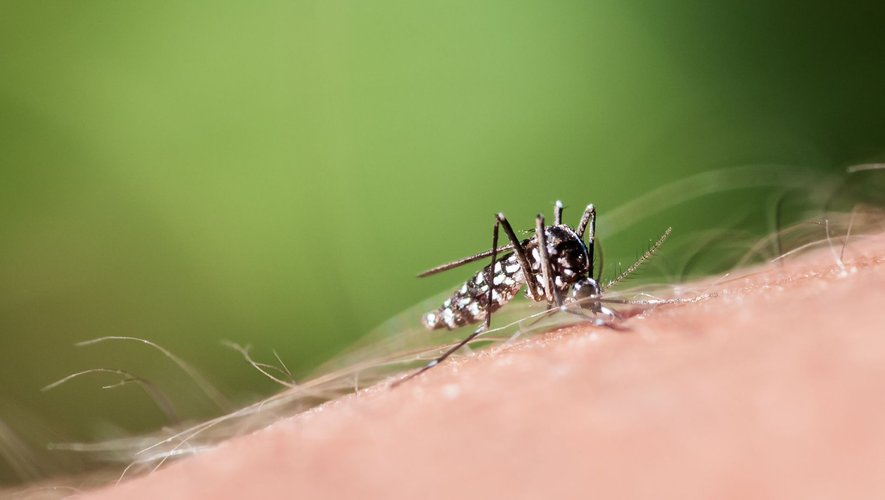The French company Valneva has just announced conclusive results for its vaccine candidate against the chikungunya virus. Transmitted by the mosquito, the disease continues to gain ground in the world, especially in temperate regions.
Soon a vaccine against the chikungunya virus? The results of the vaccine candidate developed by Valneva are in any case promising. The laboratory has just published in The Lancetthe results of a phase 3 clinical trial for VLA1553.
In all, 4,128 people took part in the study – 3,093 received the vaccine, 1,035 a placebo. After one dose of serum, 98.9% of participants developed effective antibodies against chikungunya 28 days after injection. 96% of them maintained an effective immune response 6 months after being vaccinated.
As for the safety of this vaccine candidate, the results are also convincing. The vaccine was generally well tolerated in all age groups. However, “two serious adverse events were considered related to VLA1553 treatment (mild myalgia and syndrome of inappropriate antidiuretic hormone secretion),” the researchers note in The Lancet. Both affected participants have recovered.
Causes severe joint pain
VLA1553 is a live attenuated vaccine candidate, which means that it is intended to immunize against a single pathogen, chikungunya, and is made of modified live virus, unable to cause disease but capable of eliciting a response immune. A marketing authorization request (MA) is currently being validated in the United States and Canada. In Europe, this should be formulated during the second half of 2023.
If the MA applications for VLA1553 are successful, it will be the only vaccine available against chikungunya. A vector-borne disease transmitted to humans by mosquitoes, chikungunya causes high fever and severe joint pain that usually lasts a few days but can sometimes last for months. The disease can also become chronic with persistent joint pain. Originally from East Africa, the virus takes its name from Swahili, “one who walks bent”.
Other associated symptoms include joint swelling, muscle pain, headache, nausea, fatigue, and rash. Its management is for the time being only symptomatic with analgesics then anti-inflammatories. Although the disease is rarely fatal, it increases the risk of death in the most fragile people.
Temperate regions also threatened
Identified in more than 110 countries in Asia, Africa, America and Europe, the virus is gaining ground and regularly causes epidemic outbreaks. In mainland France, while the tiger mosquito continues to gain ground, autochthonous cases of chikungunya were identified in 2010, 2014 and 2017.
A recent study conducted by scientists from the Institut Pasteur and the University of Paris Cité, looked at the transmission of the chikungunya virus by the tiger mosquito depending on the temperature, from 20°C to 28°C. “In this study, the mosquito Aedes albopictus is able to transmit chikungunya with the same efficiency at 20°C and 28°C while involving very distinct molecular processes. This is a real example of the mutual adjustment between the virus and the vector, here the tiger mosquito, in response to its environment.” emphasizes Anna-Bella Failloux, head of the Arboviruses and insect vectors unit at the Institut Pasteur and last author of the study, the results of which were published in April in the Journal of Travel Medicine.
While the tiger mosquito is now established in temperate regions of the globe – including 4/5 of France, “THE chikungunya therefore risks continuing to expand in areas where the tiger mosquito is established. In the absence of vaccines and treatments, it could become a public health problem in more countries in regions with temperate climates“, continues Anna Bella-Failloux.

